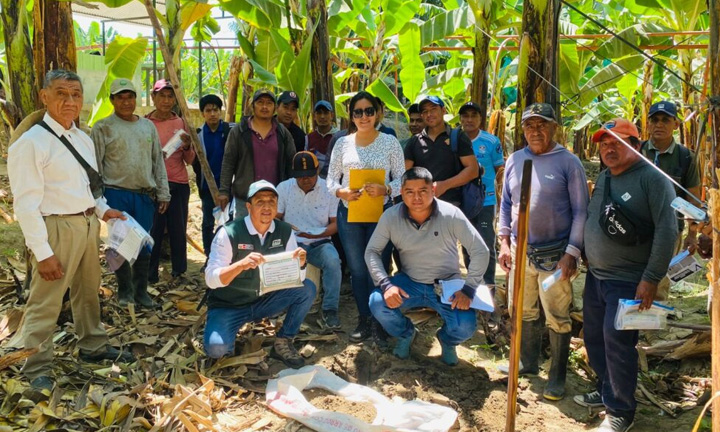SOURCE: Fresh Fruit Portal
Peruvian bananas have year-round production, making them a crucial economic activity for many communities.
Such is the case in Sullana in Piura, northern Peru. The region is a privileged area for organic Cavendish cultivation, a highly valued variety in the United States and Europe. This is why the presence of Fusarium TR4 has become a major headache for producers.
We spoke with Ángelo Núñez Cruz, agronomist engineer and partner at the Cadepos Cooperative, and deputy manager of the Urban-Rural Productive Management of the Municipality of Sullana, regarding the main production challenges faced by growers in the area.
“Due to the weather conditions in Sullana, organic Cavendish bananas get perfect brix degrees, in addition to a longer shelf life compared to other exporting countries, such as Ecuador,” Núñez Cruz told FreshFruitPortal.com. “But in 2021 export processes began to be interrupted, due to a big headache for us banana producers in the north, the Fusarium TR4”.
At present, there are only a few large companies growing bananas in Piura. Most of the volume comes from small producers associated with cooperatives. These smaller cooperatives usually sell their bananas to export companies such as Dole.
“There are also foreign importers that have their headquarters or commercial representatives in Piura. These representatives act as a key link between the company in Europe, its office in Peru, and the organization or cooperative of small local producers that will sell them their products,” Núñez Cruz said.
So far, the country’s phytosanitary authority, Senasa, has not detected any other outbreak in Peru. Only Piura, specifically in the province of Sullana, has been affected.
A more environmentally friendly management
Saying that, before Fusarium, organic banana production in northern Peru was free of vicissitudes is inaccurate.
In 2011, the region suffered a severe red spot thrips attack, a pest that affects several crops, including bananas. They have also suffered from rotting episodes, but, all in all, it was possible to harvest. However, the effects of Fusarium TR4 can stall production completely.
“Fusarium attacks the vascular bundles of the plant, preventing it, so to speak, from breathing, consuming water, and absorbing nutrients. As a result, the plant dries out, dies, and fails to harvest. If Fusarium attacks in the last week of the plant’s life, when it is ready for harvest, it is possible to harvest. However, if the fungus infects it when the inflorescence is just emerging, banana growers cannot harvest any of the fruit,” Núñez Cruz explained.
Since 2021, banana production in the fields of Piura has been drastically reduced, “it is estimated that in, at least, 40%,” he specifies.
“Fusarium does not allow the plant to be harvested; it kills it and completely dries it out. It’s like a fire, and the plant can no longer be recovered,” Núñez Cruz stressed.
Faced with this reality, Núñez Cruz wonders: “What can we do if we still don’t have the new fungus-resistant breed that is being developed with the support of INIA and other state entities, the municipality, and the farmers? We must learn to live with this fungus. Biosecurity in the field is essential to at least contain its development or entry,” he emphasized.
Angelo stresses the importance of improving fertilization habits and completely changing the technological package applied in the fields.
“Applying more organic matter is fundamental. With the support of the mayor, engineer Marlem Mogollón Meca, and together with SENASA and INIA, we are developing workshops on the use of biochar, bioferments and viols, promoting more ecological management to improve soil health. Soil health is key. If I already have Fusarium, I should avoid chemicals and focus on improving soil conditions: proper analysis, better fertilization, timely applications, and generating better conditions for the plant’s roots, so they can withstand the attack of the fungus and the grower can harvest the fruit,” Núñez Cruz explained.
Despite the impact of Fusarium, Núñez Cruz points out a positive aspect of greener management. He concludes, “Before, if Fusarium attacked when the inflorescence was just emerging, nothing could be harvested. Now, with these new applications, Fusarium can still attack, but it does so later in the season, such as week eight or nine, when harvest is close. This allows growers to harvest their banana bunches and obtain the expected income at harvest time”.

